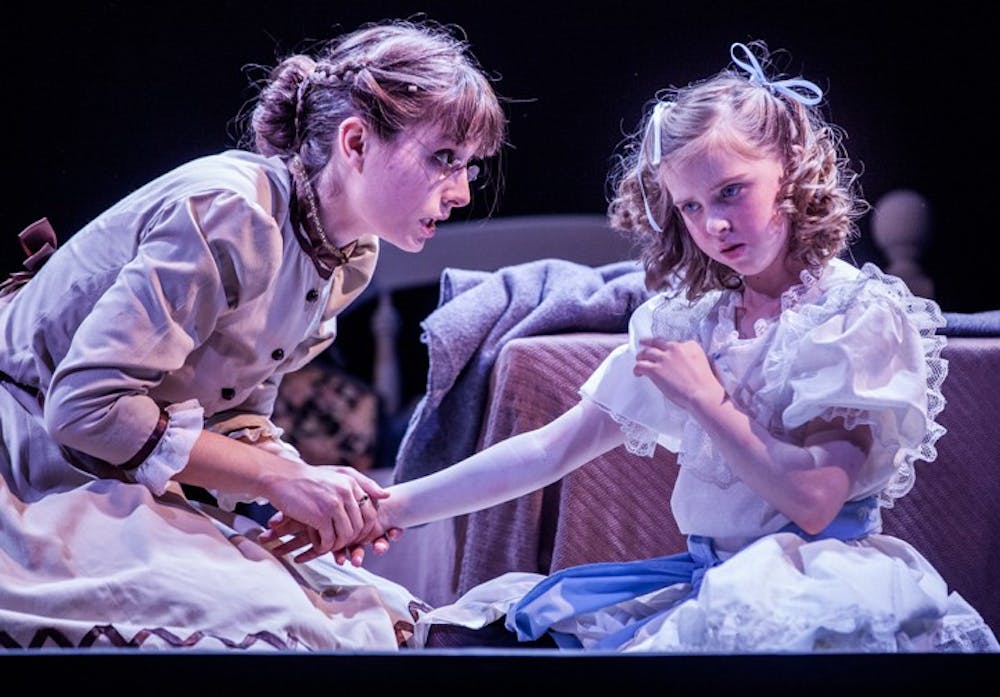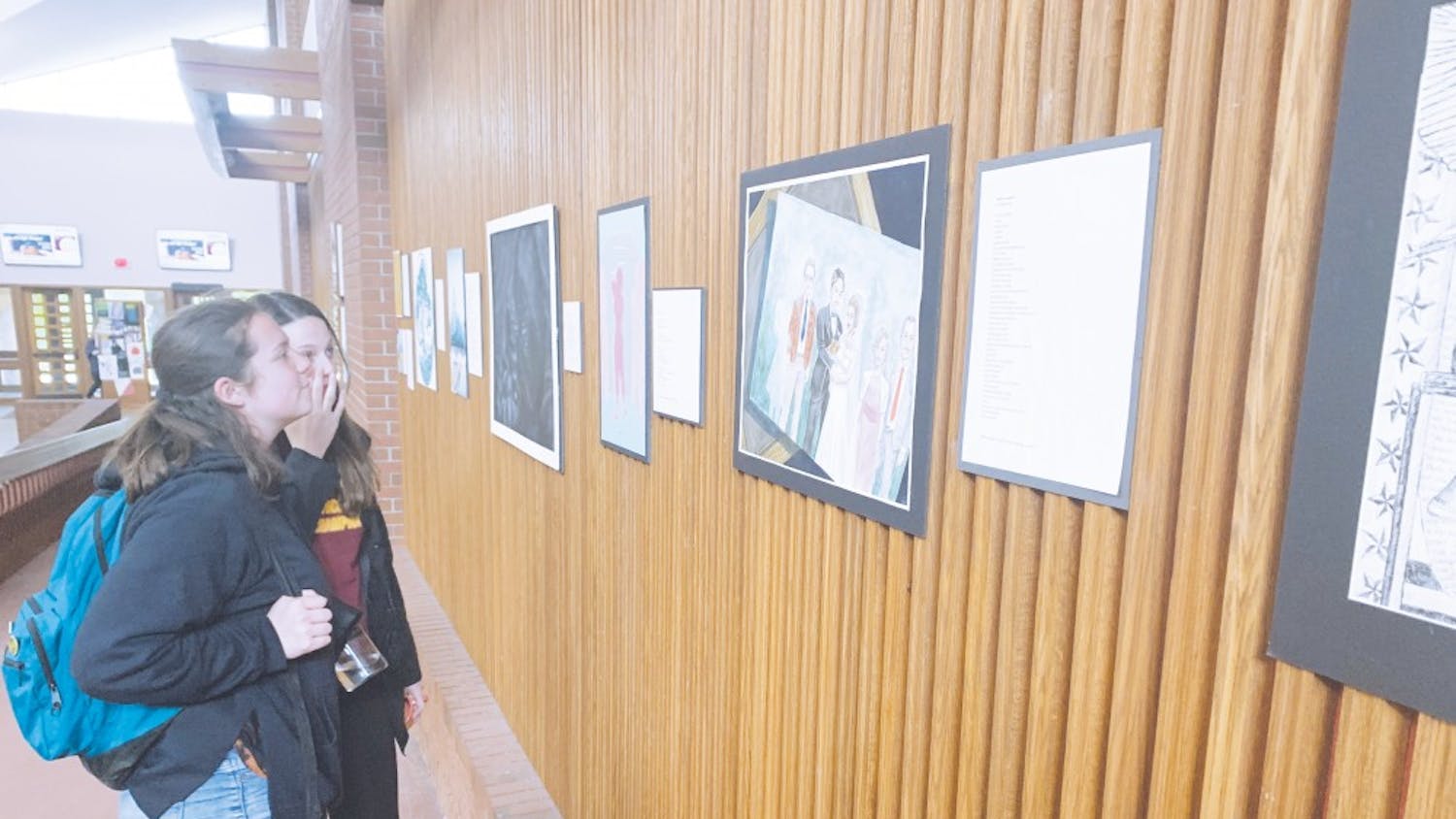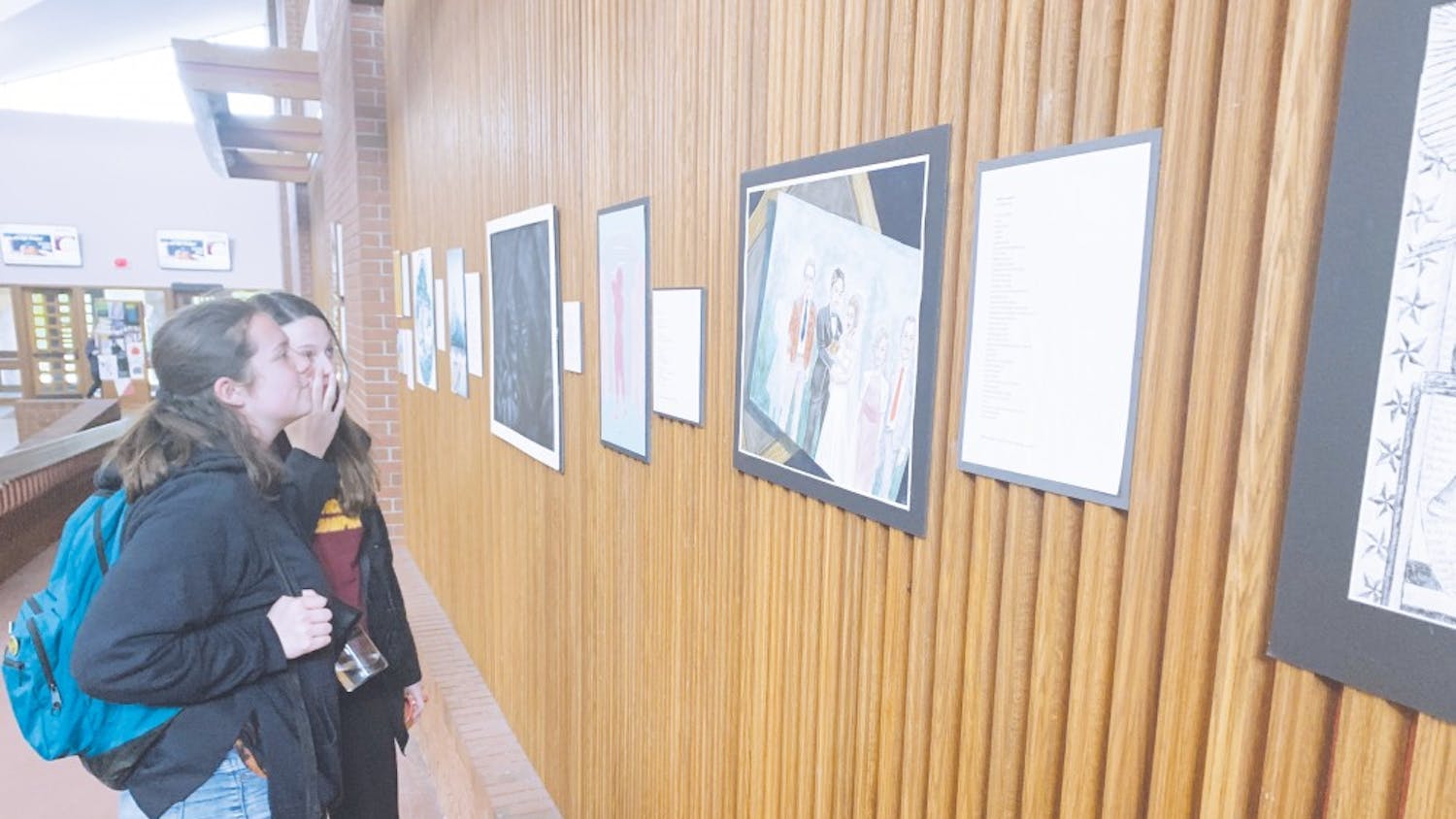By David Seaman | Echo
"The Miracle Worker" is a production that has been through many media cycles, from books to television to feature film. However, the original theatre production is the most personal and real. Watching the entire experience on stage, seeing Helen Keller shriek in the darkness, witnessing her mentor Anne Sullivan struggle with inner demons . . . all of this takes on a new meaning in front of an audience. You see and hear the anguish and eventual triumph. A play so vibrant in communication through sight and hearing is about a girl who can experience none of these.
Taylor Theatre's latest production of "The Miracle Worker" is exquisitely acted, has an absolutely fantastic set and contains incredibly moving scenes. It's one of the finest productions I've seen in my three years at Taylor. And to whom the play is dedicated to, it makes the experience all the more powerful.
Based on the original 1957 production by William Gibson, "The Miracle Worker" tells the story of Helen Keller and her teacher Anne Sullivan. Born with the abilities to see and hear, Helen loses these important functions after a childhood illness. Unable to communicate, Helen grows up a violent and angry child, spoiled by her caring but frightened family. Helen's parents turn to Anne Sullivan, a student of the Perkins School of the Blind, who is herself visually impaired. Anne realizes there is a tender spirit and intelligence in Helen. Instead of pandering to her like the Keller family does, Anne uses tough love to reach Helen. Through persistence, consistency and the use of hand signals, Anne shows Helen her true potential.
"The Miracle Worker" is a very personal play, dealing with heartbreaking situations. For director Tracy Manning it is even more personal. This was the last play of former theatre director Oliver Hubbard, Manning's teacher and mentor, who passed away in 2004.
"I remember Ollie telling me I had a director's eye," said Manning. "It was then that I realized that I was something more than I thought I would be."
For Manning and others, Hubbard's notes of encouragement to his students and fellow faculty members touched them deeply His life-giving spirit and generosity will be represented in a short documentary shown before the production. Presented during intermissions in the show will be photos of students, each holding a sign describing how their mentors affected them.
"Ollie was Tracy's teacher, and Anne was Helen's teacher," said assistant director and senior Haley Kurr. "The whole play revolves around teachers. We learn from their example."
Hubbard's examples of love and hope parallel with this production. "The Miracle Worker" resonates with themes of unfailing love and the triumph of never giving up. Manning's young daughter Rachel stars as Helen, and she does a good job portraying a confused child amid her frequent tantrums. Senior Christina Goggin plays Anne as stern in her ways and willing to defy convention in order to reveal the soul in Helen. Senior Stephen Newhall is spot-on as Captain Keller, Helen's old-fashioned Southern military man of a father who wants to love Helen but is bewildered by her behavior. Freshman Andrew Davis contrasts well with Newhall as Helen's bitter half-brother Jimmy, and sophomore Morgan Turner is convincing as Helen's worried mother.
Yet despite a cast that seems born to play their roles, the magnificent set is the real star of "The Miracle Worker." The set is the exact design used in the 2004 production, when student Corey Rodeheaver ('04) worked on the play. Rodeheaver, another student of Hubbard, is the set designer for the current production. With its grayscale tone and M.C. Escher-like abstractions, the audience is able to see what Helen experiences in her dark, muted world. But the set isn't just designed for Helen; it's arguably Anne's story as well, and the psychedelic visuals and sound effects intensify her nightmares about her upbringing. This, in turn, intensifies the drama of the play, adding layers to the production beyond the acting. The gray, the sounds and the abstractions all lead to the miraculous red water pump (which pumps real water) to give closure to Helen and Anne's stories.
With the best acting Taylor Theatre can provide, a Broadway-worthy set and moving themes, "The Miracle Worker" is a triumph. Ollie would be proud.
"The Miracle Worker" will run this weekend with performances at 8 p.m. this Friday and Saturday and 2 p.m. this Sunday. The play will also be performed May 9-10 at 8 p.m. and May 11 at 2 p.m. Tickets cost $7 for Taylor students and $10 for faculty and staff. They can be purchased at the theater box office located in Rupp. In addition, there will be a worship service in memory of Oliver Hubbard at 4 p.m. Saturday in the Great Room of the Muselman House, followed by a dinner at 6 p.m.(Thumbnail photograph by Olivia McCash)





